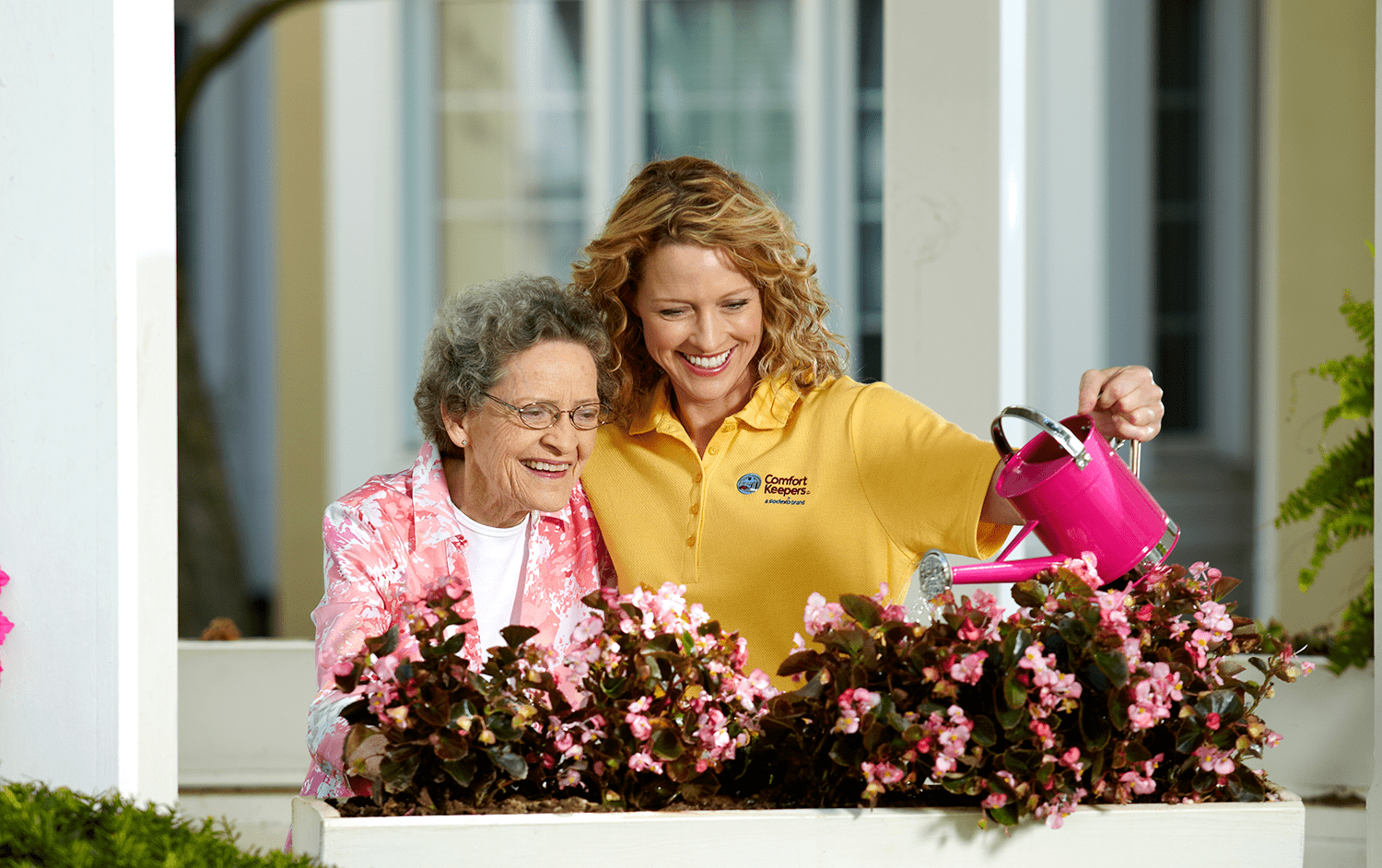Simple and Healthy Eating Tips for Seniors on a Budget
Health Eating for Seniors | July 18, 2024

What Every Senior in Victoria, BC, Needs to Know About Healthy Eating for Seniors on a Budget
Simple and Healthy Eating | There is a lot of information on eating healthy and a lot of confusion. What is certain is that we all know that we are supposed to eat healthily.
Before we can do that, though, we need to understand what this means. Breastcancer.org gives an excellent, simple definition, one that applies to all people, not just cancer patients, of what eating healthy means
“Healthy eating means eating a variety of foods that give you the nutrients you need to maintain your health, feel good, and have energy. These nutrients include protein, carbohydrates, fat, water, vitamins, and minerals.”
While this definition is simple, putting it into practice can be difficult for many people. For seniors, it may be difficult to maintain for two reasons: they may have physical limitations that prevent them from preparing food and they may believe they cannot afford to.
However, the same strategies that can be applied by a working mother or a busy single father to get healthy food quickly, easily, and inexpensively on the table can be useful to seniors with limitations on a budget.
Tips for Tackling Time and Physical Limitations of Seniors
#1. Plan, plan, and plan:
That is the secret to a regular, healthy lifestyle. It is easy to resort to fast, processed, convenience foods. This type of food does not match the definition of healthy eating. A better approach to avoid resorting to unhealthy foods and snacks is to take some time one day a week to plan meals. This takes the guesswork out of daily meal preparation.
#2. Making a large quantity of food:
Cut down on the work involved in meal preparation; this can then be portioned into individual serving containers to freeze for later consumption. Homemade TV dinners are healthy alternatives to buying food out of a box.
#DYK: One-pot meals, such as soups and stews, are:
- Easy to prepare
- Do not dirty many dishes, so cleanup is easy
- Freeze extremely well
Alternatively, when preparing a meal, always make extra servings and freeze the rest for later. This has an added advantage for seniors whose caregivers may not come for every meal: if the caregiver prepares extra meals when they are present, the seniors will have extra meals for those times when they are on their own.
#3. Ready-to-eat foods:
Another effective strategy is to have ready-to-eat items readily available. Keep a stock of whole-grain, no-added-sugar cereals on hand. If permitted, adding honey or fruit can enhance sweetness.
Ensure a variety of fresh fruits and vegetables are always available for snacking. When shopping, aim to buy “the rainbow” – leafy green vegetables and brightly colored orange, red, yellow, and purple fruits and vegetables – to ensure a colorful plate full of essential nutrients.
Additionally, dried fruits are a healthy option but should be consumed in moderation due to their high sugar content.
Simple and Healthy Eating on a Budget
Many seniors are on a fixed budget and watch their overall expenses. When shopping for food with your senior, shop the perimeter of the store where the fresh foods are displayed and buy fruits and vegetables in season. (Out-of-season produce is always more expensive.)
Unhealthier, processed foods are strategically located directly in the middle of the store. Shoppers need to walk past these foods to get to popular fresh products such as dairy or cheeses, increasing the chance that they will buy unhealthier products. Be aware of this and shop smartly.
While processed food choices may seem cheaper than fresh food, you generally need to eat greater quantities of these to feel full, and you tend to feel hungrier soon after eating foods high in fats, refined sugars, and carbohydrates.
Complex carbohydrates (e.g. whole grains, quinoa, barley, wild rice); fresh fruits and vegetables, especially green, leafy vegetables; and good protein such as chicken, fish, beans, and nuts break down more slowly in your system leaving you full longer. Some fresh products may seem too expensive, but eating smaller quantities equals spending less overall.
Good Food on a Tight Budget
If the price of fresh products is concerning, the Environmental Working Group (EWG) offers a useful resource, Good Food on a Tight Budget. This guide lists the most popular fresh foods, rating them according to nutritional value versus cost.
For example, fruits that pack the most nutrients for the lowest cost include bananas, pears, nectarines, and orange juice. Broccoli, collards and romaine lettuce are your most nutritious best values for vegetables. The EWG also offers shopping tips and recipes and you can plan meals with your senior using healthy foods while staying within budget.
Download the free guide at www.ewg.org
Tips for Simple and Healthy Eating for Seniors
Tip #1. Portion Control:
You can reduce your senior’s food expenses by reducing the portion sizes of meals. Seniors may have increased nutritional requirements, but they also may have decreased caloric requirements. There has been a growing trend over the past decades of “super-sizing” everything, including meal portions, and since many of us are raised to believe we must eat everything on our plates, obesity is on the rise.
Tip #2. Smaller Plate Size:
A simple method to combat this is to serve food on smaller plates; this tricks the brain into believing that you are eating more than you are. Fill the plate with a variety of vegetables, grains, and complex carbohydrates rather than with more expensive cuts of meats, and serve meats in smaller portions (e.g. cut a steak in half for two meals).
Tip #3. Bulk Cooking:
A good way to stretch meats is by making soups and stews. These are filling and nutritious and can provide more meals than if prepared as a main dish. These techniques allow you to enjoy the foods you love but in smaller quantities and more cheaply.
Tip #4. Eating Out:
When going out to eat, seniors should avoid fast food establishments and look for local places that have good, healthy food at reasonable prices. Local farmer’s markets and diners may be good alternatives for an inexpensive lunch. Taking home leftovers can also save money. This can convert one meal into two meals for the same price as one.
Simple and Healthy Eating Resources for Seniors
There are many resources available that can help you and your senior plan meals that are healthy while not breaking the bank. In addition to the resources already mentioned, MyPlate.gov, The Harvard School of Public Health and Livestrong.com can provide additional information on nutrition and meal planning and offer healthy recipes.
The key to maintaining a healthy lifestyle in later years is to keep it simple. Look for fresh foods, prepare them, use minimal saturated fats, and enjoy your meals.
The Best Senior Home Care Provider in Victoria, BC, is Comfort Keepers®
Firstly, if you are concerned about the health and well-being of your aging loved ones, we can help with 24-hour care. We offer senior care, post-surgery care, palliative care, personal care, senior living transition services, and much more!
Comfort Keepers® Victoria Provides In-Home Elderly Care Services
Aging in place means keeping seniors happy and healthy at home. Comfort Keepers® trained caregivers provide seniors with the highest quality of life possible. In particular, our Interactive Caregiving™ system provides care that addresses safety, nutrition, mind, body, and activities of daily living.
Comfort Keepers® Victoria In-Home Caregivers Can Help with Interactive Caregiving™
Personal and empathetic care starts in the heart and allows us to meet our clients’ needs. Our philosophy is to elevate the human spirit. Our caregivers will be there every step of the way to ensure your loved one has a better quality of life.
Senior Homecare in Victoria, BC
Our unique services offer families respite care, overnight care, personal care, companionship care, palliative care, and end-of-life care. To learn more, contact the Comfort Keepers Victoria office.
Comfort Keepers® Victoria is Proud to Provide Senior Care and Home Care Services to Keep Seniors Safe in Their Homes
If you are searching for home care near you, we can help! Comfort Keepers® Victoria can provide home care for Victoria and surrounding areas. Service territory includes Colwood, Saanich, Sidney, James Bay, and Oak Bay. Please call (778) 265-5999 and learn how your loved ones can receive compassionate, professional in-home care.
Quality and Accredited Respite Care for British Columbia Families
Comfort Keepers® Victoria has achieved Exemplary Standing accreditation from Accreditation Canada. This accreditation, a rigorous evaluation of organizational processes, policies, and procedures against established quality standards by industry experts, signifies that Comfort Keepers’ offices have successfully met or surpassed the stringent benchmarks for Home Care companies as defined by Accreditation Canada.
References
- BreastCancer.org. (January 2014). What Does Healthy Eating Mean? Retrieved from http://www.breastcancer.org/tips/nutrition/healthy_eat
- Environmental Working Group. (August 2012). Good Food on a Tight Budget. Retrieved from http://www.ewg.org/goodfood/
Individualized Home Care Options
Long-Term Home Care, 24 Hour Home Care & Short Term Care Options Customized for You






